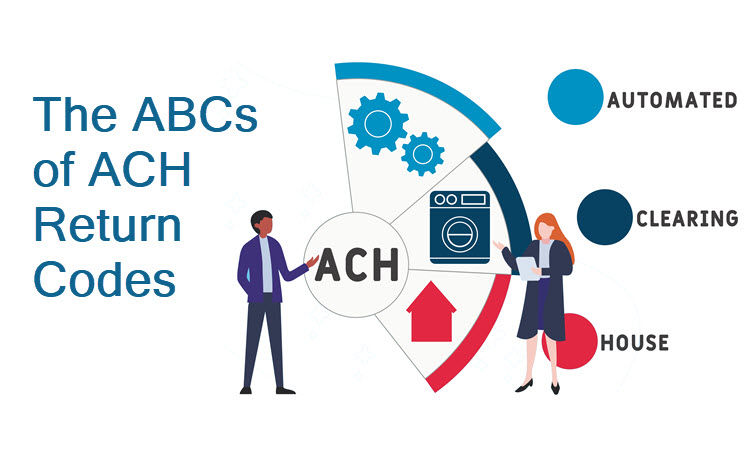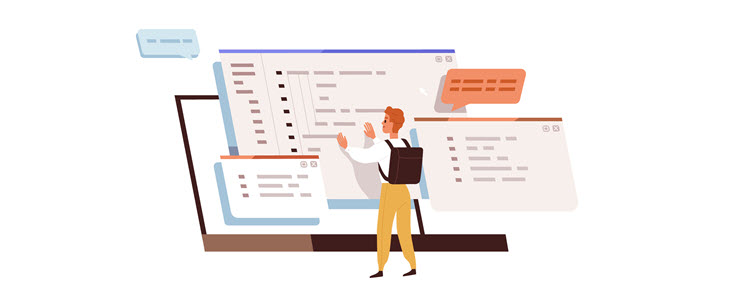
The ABCs of ACH Return Codes
This ACH return code is used when the RDFI wants to return an entry arranged by the originator and the receiver in case of an error that isn’t in accordance with the rules of the authorization. For instance, the amount is different from the agreed one, the payment date is wrong, or the receiver didn’t receive a notice prior to the entry.
When the originator corrects the error, the entry can be submitted again.
R12 – Account Sold to Another DFI
When an account is sold to another depository financial institution (DFI), this ACH return code is sent to the financial institution trying to debit the account in question.
The ODFI needs to ask the client for their new bank account number and update the data in their automated payment schedule, if any.
Return time frame: Two banking days.
R13 – Invalid ACH Routing Number
This return code is obtained when an invalid ACH routing number is a part of an entry.
Contact the client to verify the routing number or enter the new one if this number has been changed.
R14 – Representative Payee Deceased or Unable to Continue in that Capacity
The representative payee is someone that has the authorization to receive entries in the name and on behalf of people who can’t accept such entries, like minors and legally incapacitated adults. The beneficiary is not deceased, so the new representative payee is to be appointed.
R15 – Beneficiary or Account Holder Deceased
The beneficiary doesn’t have to be the account holder. Hence, there are two possible use cases:
- The beneficiary, the person who has the right to use the benefits of the account, is deceased.
- The person who is the owner of the account is deceased (not a representative payee).
R16 – Account Frozen
The assets on the account are not available, due to the restrictions imposed by the legal authorities or the RDFI.
The account may be frozen if the Office of Foreign Assets Control (OFAC) instructs the RDFI to do so.
Until the account in action is made available again, ask the client to provide another bank account that can be debited.
R17 – File Record Edit Criteria
If some fields on the entry cannot be processed by the RDFI, it’s necessary to highlight them on the return so that the payer knows what sections to edit and enable the payment.
R18 – Improper Effective Entry Date

The R18 ACH return code is sent when the due date for a credit entry comes two banking days after the banking day of payment processing specified by an ACH-officer. Another reason for sending this code is when the effective date comes after the processing window.
R19 – Amount Field Error
The amount of the entry is above $25,000, or the entry is either zero or is not numeric.
R20 – Non-Transaction Account
An entry has been made to an account that is not meant for B2B transactions, such as a savings account. Transactions to this account are restricted or prohibited so ask the client to provide a different bank account.
R21 – Invalid Company Identification
The identification number via which the company is identified and verified is either incorrect or invalid. It’s necessary to double-check the payment info and correct the errors in the company identification field.
R22 – Invalid Individual ID-Number
For the Customer initiated entry (CIE) and the MET-entry in which the original individual ID is not used, the receiver has informed the RDFI that the identification number used by the originator is wrong.
R23 – Credit Entry Refused by Receiver
The R23 ACH return code is generated when a receiver declines the entry for the following reasons:
- The account is involved in a legal procedure.
- The amount requested by the receiver has not been remitted.
R24 – Duplicate Entry

The R24 ACH return code means that the RDFI recognizes an entry as a duplicate of another previous entry in terms of date, transaction number, the amount of money involved or any other information. In that case, the RDFI needs to take into account that it’s highly likely that the originator has already noticed the error and issued an order for a reversal transaction.
R25 – Addenda Error
The value of the addenda record indicator is incorrect and the code is either missing, invalid, or it is out of sequence.
R26 – Mandatory Field Error
Data from one or more mandatory fields is either missing or inaccurate.
R27 – Trace Number Error
The original entry trace number either doesn’t correspond adequately in the addenda record or it’s missing. The third option is that it doesn’t correspond to the change of the entry notification.
R28 – Routing Number Check Digital Error
This ACH return code notifies that there’s an error in the check digit for the account routing number.
R29 – Corporate Customer Advises not Authorized
The R29 return code is sent when the receiver notifies the RDFI that the originator of the payment in question doesn’t have the authorization to debit the receiver’s account.
It’s necessary to contact the client and cancel all the scheduled automatic payments in order to avoid recurring returns until the client provides proper authorizations.
R30 – RDFI not Participant in Check Truncation Program
This return code indicates that the RDFI does not take part in a check truncation program.
R31 – Permissible Return Entry
If the ODFI wants to accept a CCD (Cash Concentration and Disbursement) or CTX (Corporate Trade Exchange) entry, the RDFI is allowed to return it.
R32 – RDFI Non-Settlement
The RDFI is not capable of settling the entry.
R33 – Return of XCK Entry
The RDFI has decided to return an XCK entry (Destroyed Check Entry).
R34 – Limited Participation DFI
The state or federal supervisor has limited the participation of the RDFI.
R35 – Return of Improper Debit Entry
This return code refers to debit entries that do not have the permission to loan accounts or for CIE-entries.
R36 – Return of Improper Credit Entry
ACH credit entries cannot be used with XCK, TEL, POP, RCK, BOC, and ARC.
R37 – Source Document Presented for Payment
The source document referring to POP, BOX, or ARC has been prepared for the transaction
Additional ACH Return Codes

In addition to the explained ACH return codes, there are some codes that aren’t used as frequently as the ones above. We hereby present them in the table below.
Return code Reason for return
- R38 Stop Payment on Source Document
- R39 Improper Source Document
- R40 Return on ENR Entry by Federal Government Agency
- R41 Invalid Transaction Code
- R42 Routing Number/Check Digit Error
- R43 Invalid DFI Account Number
- R44 Invalid Individual ID Number/Identification Number
- R45 Invalid Individual Name/Company Name
- R46 Invalid Representative Payee Indicator
- R47 Duplicate Enrollment
- R50 State Law Affecting RCK Acceptance
- R51 Notice not Provided/Signature not Authentic/Ineligible Conversion
- R52 Stop Payment on Item Related to RCK Entry
- R53 Item and ACH Entry Presented for Payment
- R61 Misrouted Return
- R62 Return of Erroneous or Reversing Debt
- R67 Duplicate Return
- R68 Untimely Return
- R69 Field Error
- R70 Permissible Return Entry not Accepted
- R71 Misrouted Dishonored Return
- R72 Untimely Dishonored Return
- R73 Timely Original Return
- R74 Corrected Return
- R75 Return not Duplicate
- R76 No Errors Found
- R77 Non-Acceptance of R62 Dishonored Return
- R80 IAT-Entry Coding Errors
- R81 Non-Participant in IAT-Program
- R82 Invalid Foreign Receiving DFI Identification
- R83 Foreign Receiving DFI Unable to Settle
- R84 Entry not Processed by Gateway
- R85 Incorrectly Outbound International Payment
Conclusion
This article provided an extensive list of all ACH return codes and what each code stands for.
To learn how to integrate ACH payments into your business check out our Guide on how to accept ACH payments.
Use this as a resource next time your payment processing integration or application returns an unknown code. Resolve any potential issues to complete online payments in an efficient and secure manner.


